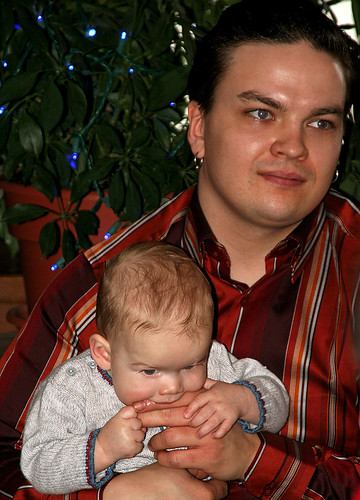
HAPPY NEW YEAR!
-- From within and without, they meet up and hang out for coffee while I transcribe. --
| You Are Dasher |
 You're an independent minded reindeer who never plays by the rules. Why You're Naughty: That little coup you tried to stage against Santa last year Why You're Nice: You secretly give naughty children presents. |
 |
A predator is any animal that hunts and eats other animals, which are called the prey. Generally, carnivores are predators and herbivores are prey. Predators have adaptations to catch, kill, and eat their prey, and, in return, the prey have special adaptations to avoid being eaten.-from Discover Africa
Predators play an important role in nature. Many scientists believe they help keep the populations of their prey from getting too large and using up more food and other resources than their habitat can provide. To be successful hunters, predators need to be able to see, smell, or hear their prey.
Predators need feet and legs adapted to running down (pursuing) their prey or to sneaking up on them. Predators need powerful teeth and jaws to kill and eat their prey; many have sharp claws to help catch the prey. Predators do not chew their food but tear it off the bones and swallow it whole.
Good eyesight is important to help predators in locating food. Predators generally have both eyes in front of their heads, so that they are looking forward, which gives the animal binocular vision. Binocular vision permits an animal to judge the distance of an object accurately. This is important when a predator is trying to leap at or run down an animal. Cheetahs and hawks, for example, have binocular vision. (People also have binocular vision, as do other primates and climbing mammals, because arboreal animals need to be able to judge distances between tree limbs for jumping and swinging. Scientists believe that early ancestors of people were tree-dwellers.)
Newborn young of predators are usually altricial (helpless) and depend on their mothers for care. The young are hidden in rock cavities, thickets, and holes; and in the case of lions, cared for by the entire pride (family group). In contrast, the babies of prey animals are generally precocial; soon after birth they are able to get up and run. This is important, because the newborn herbivores are often hunted as food by predators. Baby zebra and wildebeest can stand up and follow the herd only a few hours after birth. The large herbivores of the savanna usually bear only one young, rarely two; in contrast, lions, leopards, and cheetahs can have one to six young, though two to three is normal.
Predators hunt to feed their young and in turn teach them how to hunt. It takes a lot of practice to become a good hunter. Predators hunt their prey in three ways: stalking, chasing the prey down, and attacking in a pack. Some predators, such as the lion and leopard, stalk their prey. They can outrun their prey only over a short distance. They first get close to the prey, moving quietly and staying low to the ground, hiding in the vegetation. When they are very close, they leap and ambush the prey. Lean, long-legged cheetahs first stalk their prey, but then outrun them and chase them down, running at speeds of up to 60 miles (100 kilometers) per hour for limited distances of up to 400 yards (366 meters). Some predators, especially smaller ones, such as hyenas and wild dogs, hunt in groups. When a prey animal is sighted, the hunting pack chases it down and the meat from the animal is shared. The advantage of hunting in packs is that different pack members can take turns in chasing the prey at high speed - expending the prey's energy but conserving that of the individual members of the pack. Animals that hunt in packs must work together to be successful.